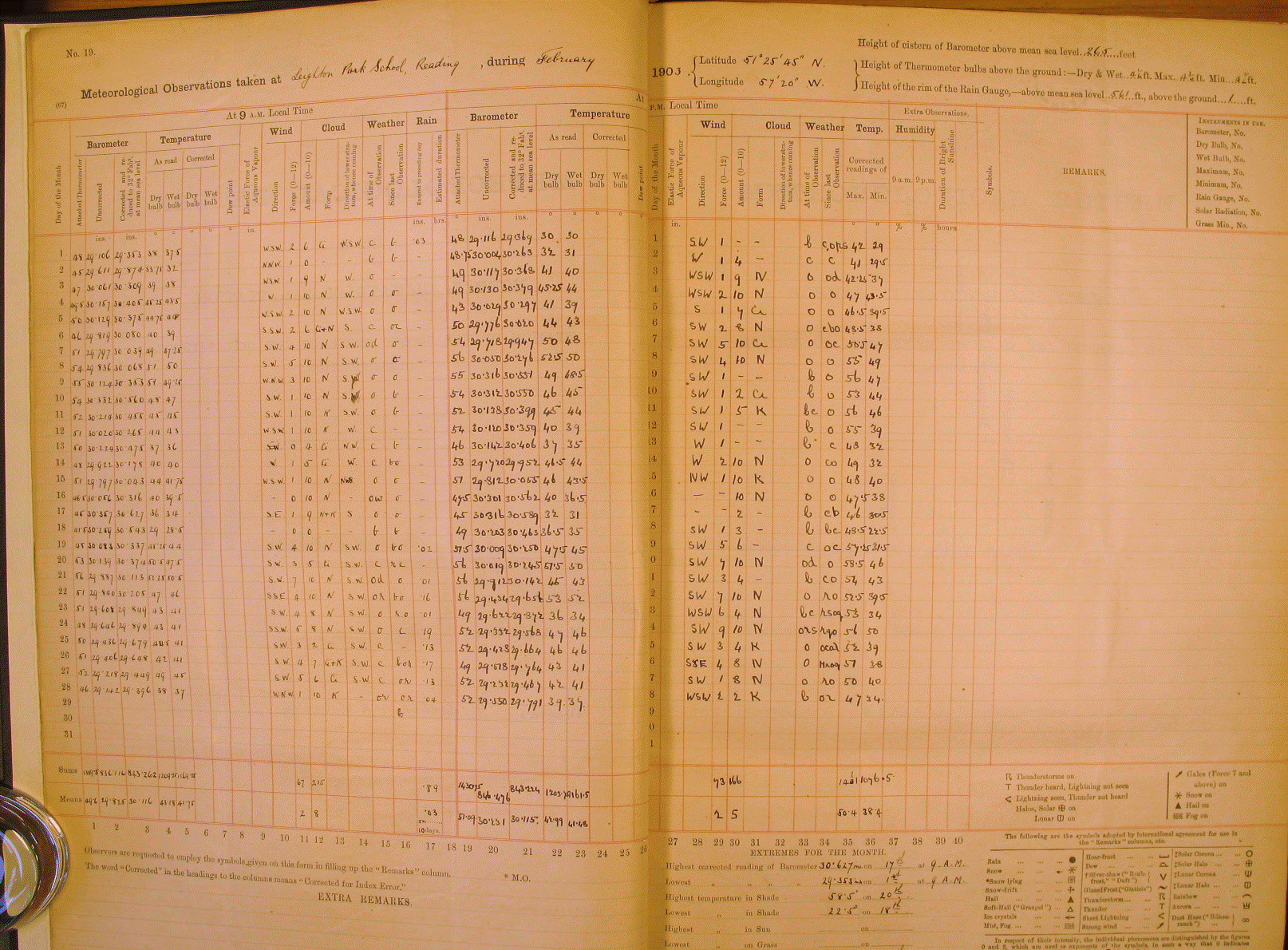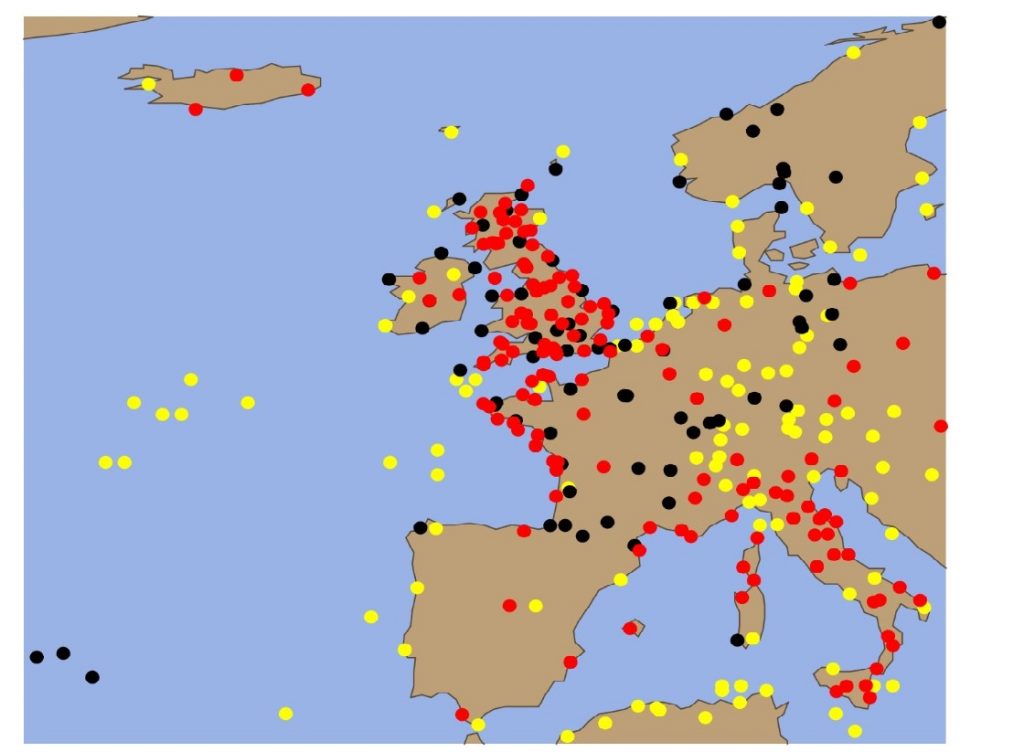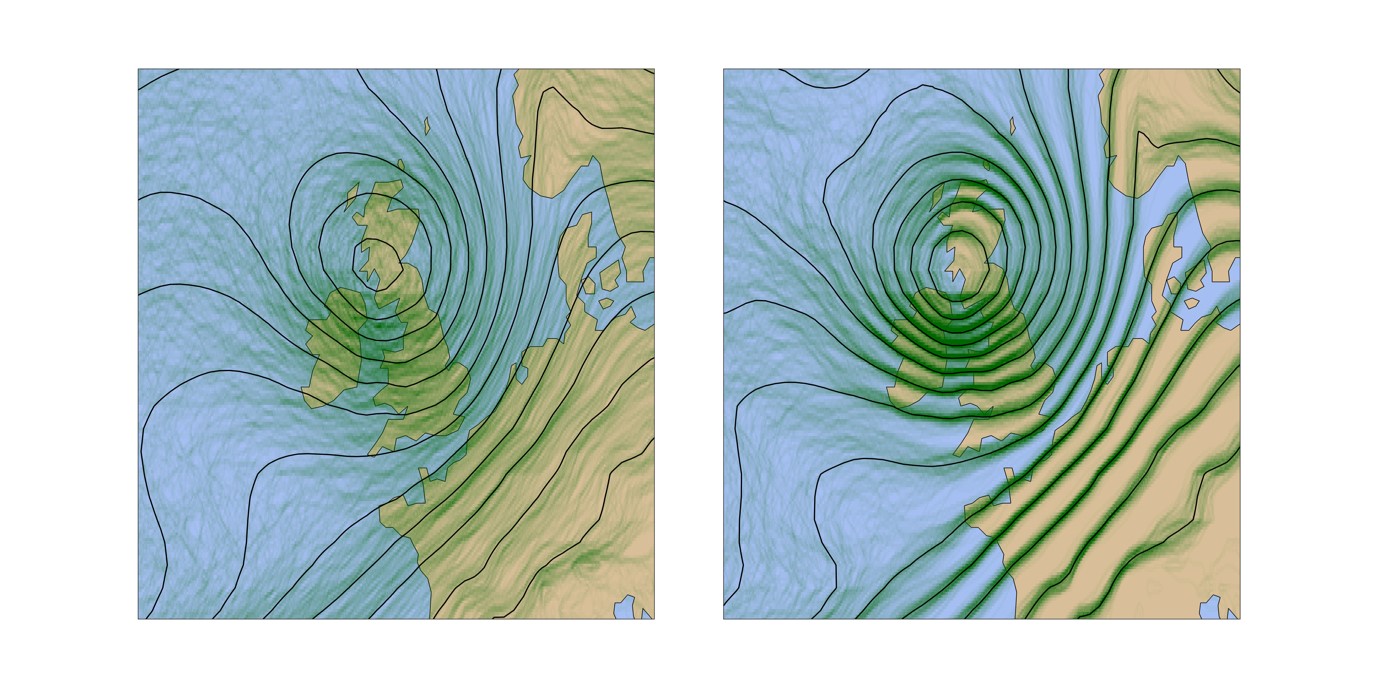By: John Methven
Climate action has never been higher on the global agenda.
There is a pressing need to change our activities and habits, both at work and home, to steer towards a more sustainable future. National governments, public sector organizations and businesses are setting targets to achieve net zero carbon emissions by 2030. Immediately the term “carbon emissions” focuses attention on activities burning fossil fuel: driving a car, taking a train or catching a flight. However, when our Department first attempted its own carbon budget analysis in 2007, including the contribution of our activities to power consumption and carbon emissions far from Reading, we found that about 63% was attributable to computer usage compared with 24% business travel, 8% gas (heating) and 5% building electricity. Commuting to work was not included, although we are fortunate in that the majority of staff and students walk or cycle to work. The computing carbon cost was not even dominated by local power consumption by our computers (18%), or air-con in server rooms on site (7%), although the indirect carbon costs of the manufacture and ultimate waste disposal of those computers was not accounted for. The overwhelming contribution was from the extensive use of remote computing facilities (38%) – namely the supercomputers used to calculate weather forecasts, climate projections and to extend human knowledge in atmospheric and oceanic science.
What a conundrum! While improved weather forecasts save lives worldwide, through disaster risk mitigation, and also improve business efficiency, the daily creation of the forecasts is contributing to climate change which is increasing environmental risk. Back in 2008, many of the top 100 most powerful supercomputers were used for science, among them the leading global weather forecasting centres and international facilities enabling global climate modelling. Only 10 years on, the global cloud computing industry dwarfs the scientific supercomputing activity; even so, the global climate community takes supercomputing energy demands seriously. For example, scientists plan (Balaji et.al., Geos. Model Devel., 2017) to measure the energy consumed during the next generation simulations of future climate (CMIP6) that will contribute to the United Nations IPCC Sixth Assessment Report. As part of that effort they have developed new tools to share experiment design and simulations so that future computer usage can be minimized (Pascoe et.al., Geos. Model Devel. Disc., 2019). Many supercomputing facilities now have a renewable energy supply and there is even a Green500 list ranking supercomputers by energy efficiency.
However, the revolutionary surge in digital storage has been outside the science sector: Gigabit magazine lists the top 10 cloud server centres in 2018 by capacity. The electricity consumption in the largest data centres worldwide is cited in the range 150-650 MW. Putting it into context, a single data centre can consume electricity equivalent to 2% of the entire UK electricity demand (34,000 MW)! Although some cloud server centres source electricity from renewables, such as dedicated hydro-electric plants, many do not and the total carbon footprint of cloud servers is huge. For example, Jones (Nature, 2018) states, “data centres use an estimated 200 terawatt hours (TWh) each year. That is more than the national energy consumption of some countries, including Iran, but half of the electricity used for transport worldwide, and just 1% of global electricity demand.” Some estimate that the carbon footprint from ICT (including computing, mobile phones and network infrastructure) already exceeds aviation. Although both sectors are expanding rapidly, cloud storage is expanding much faster with projections that over 20% of global electricity consumption will be attributable to computing by 2030. Much of the electricity is used to cool the computers, as well as power the hardware, and waste heat and water consumption are significant environmental issues. Although renewable power generation reduces the environmental impact, it is worth pausing for thought – what is all this data being stored?
Personal cloud storage is dominated by digital photos. Imagine you have been out with friends, your phone has uploaded the images as soon as it can sync to the cloud. No action required from you, but should you think twice? You have contributed to carbon emissions, and worse still the contribution will keep growing as long as you keep the data. How many of those photos will you look at again? Perhaps at least choose the best photos to keep and delete the rest?
In a work context, the storage for most businesses is dominated by email folders. Globally, 85% of email data volume is spam and 85% of that makes it into the inbox. Few people have time to go through their folders to delete unwanted messages and the volume mounts up. Emails are arriving continuously many with attachments, containing unsolicited images and hidden data on fonts (the content could have been relayed in plain text messages). Relentlessly piling up into a teetering heap of digital waste – requiring power to keep it alive – like a Doctor Who monster waiting just in case its master wants to visit tomorrow (artist’s impression?). Is the neglected monster sad? Perhaps a topic for AI fans.
What can we do? What can you do? An effective contribution to climate action now would be to clear out your waste (somewhere out there on spinning disk), junk those emails and rubbish photos and feel good about it. Sorting tens of thousands of items into “keeps” and junk is a daunting task. Moving forward, wouldn’t it be good if all senders put a “use by date” on their emails and the recipient’s mail tool automatically deleted the message when expiry date was reached? Then we would know that the messages we send, even if unloved, at least do not contribute long-term to global digital waste.
All images have been spared in the creation of this article.














 Martin Airey (holding VOLCLAB package) and Corrado Cimarelli
Martin Airey (holding VOLCLAB package) and Corrado Cimarelli Keri Nicoll, Kuang Koh, and Martin Airey
Keri Nicoll, Kuang Koh, and Martin Airey Figure 1: An example of convective self-aggregation from an RCE simulation using the Met Office Unified Model at 4km grid length with 300 K SST. Time mean precipitation in mm/day for (a) Day 2 (still scattered), and (b) Day 40 (aggregated). Note that the lateral boundaries are bi-periodic, so the cluster in (b) is a single organised region. Adapted from Holloway and Woolnough (2016).
Figure 1: An example of convective self-aggregation from an RCE simulation using the Met Office Unified Model at 4km grid length with 300 K SST. Time mean precipitation in mm/day for (a) Day 2 (still scattered), and (b) Day 40 (aggregated). Note that the lateral boundaries are bi-periodic, so the cluster in (b) is a single organised region. Adapted from Holloway and Woolnough (2016).
 Figure 1: Surface Mass Balance (SMB) (the balance between accumulating and melting snow) estimated for Greenland in UKESM (blue and black lines) compared with the output from a
Figure 1: Surface Mass Balance (SMB) (the balance between accumulating and melting snow) estimated for Greenland in UKESM (blue and black lines) compared with the output from a 